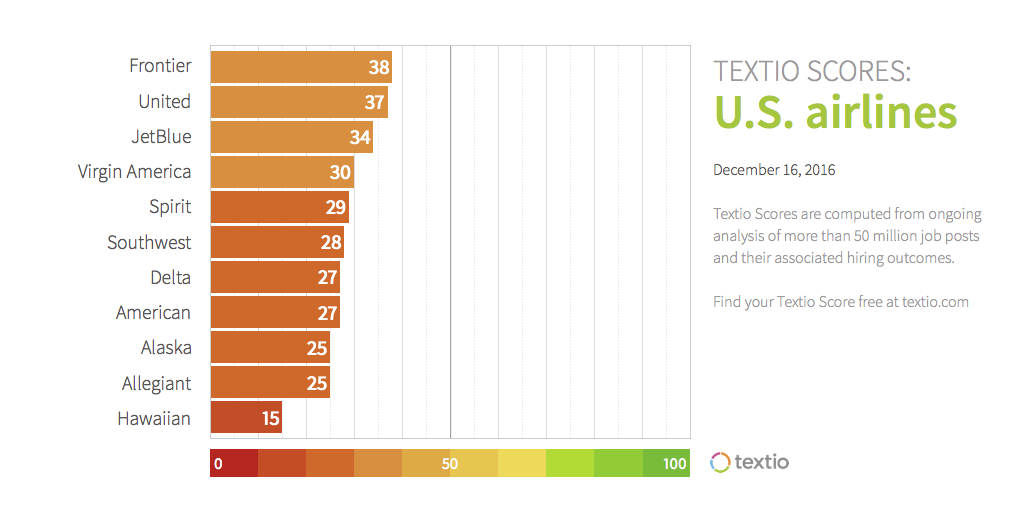Low-cost airlines hire better

According to AAA, 2016 is set up to be the busiest holiday travel season on record. An improving labor market and cheaper airfare will bring an estimated 6 million Americans to the skies, a 2.5% increase from last year.
This Saturday I’ll be joining this mass migration as I fly from Seattle to New York, which means my potential future ranges from carefree (flights on or ahead of schedule, perhaps with complimentary beverages?) to House of Pain (losing my luggage and using newspapers to make a makeshift tent in Terminal B).
In any business, your customer experience is only as good as the people you hire — this is especially true for airlines. Frequent fliers know that a trip to the airline counter can make or break your travel plans with a feeling of warm fuzzies or impending doom inside your gut. There are many variables in air travel beyond our control, but airlines can control how they find the very best employees. In light of the holiday travel season, we took a look at the major U.S. airlines in the Textio Index to see how they rank.
Using over 50 million job listings with outcomes data, Textio has proven that the language you use in a job post changes who applies, which ultimately determines who gets hired. Airlines are no exception. The words you use to recruit people — from your pilots and flight attendants to your engineers — measurably affect how you compete for talent.
The first thing you’ll notice is that compared to other industries, U.S. airlines are far below average in hiring performance across the board. The average Textio Score for these 11 airlines is 28 out of the highest possible score of 100, compared to an average of 50 across all industries.
But the most interesting finding? Textio’s data shows a pretty clear split in the rankings between low-cost and legacy carriers. Companies qualified as “budget airlines” like Frontier and JetBlue take most of the top slots in the airline talent market over traditional carriers like Delta, American, Alaska, and Hawaiian Air, which mostly comprise the bottom tier. United is the one traditional airline in the top tier with a score of 37. See the full ranking in the chart below. Do your travel experiences reflect this list?

If you’re curious to see who is hiring best globally, check out the Textio 50, which is a list of the top-ranked large companies in the world according to their Textio Score.
And since Textio is built on data science, this seems a good time to remind everyone that air travel is statistically far safer than going by car. No matter how you’re planning to travel this year, wishing you safe travels from Textio.